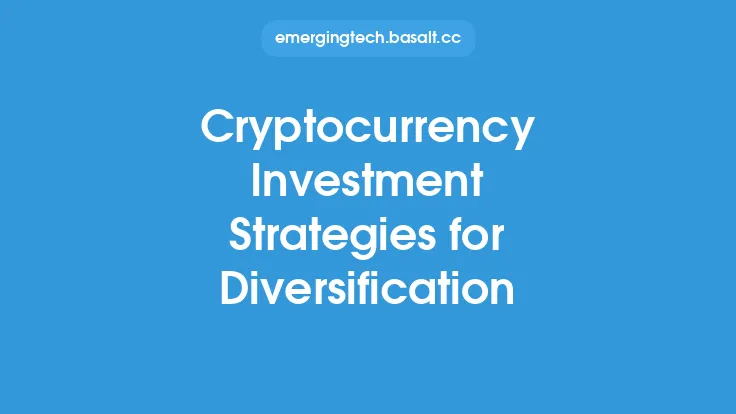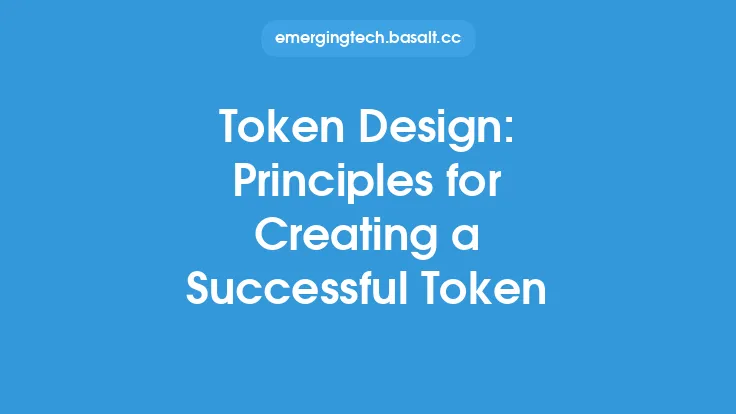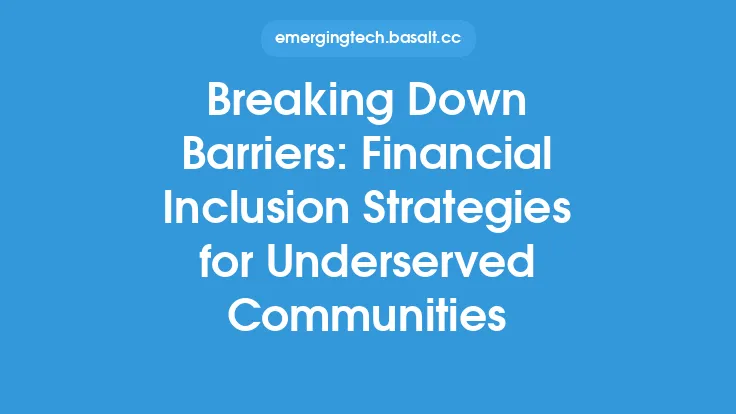The world of blockchain and tokenomics is known for its volatility, with token prices fluctuating rapidly and unpredictably. This volatility can be a major challenge for investors, users, and developers, making it difficult to predict the value of a token and plan for the future. However, there are several strategies that can be employed to mitigate volatility and promote token price stability.
Introduction to Token Price Stability
Token price stability is crucial for the success of any blockchain project. A stable token price can attract more investors, increase user adoption, and provide a solid foundation for the development of a robust ecosystem. On the other hand, a volatile token price can lead to a loss of confidence, decreased adoption, and a struggling ecosystem. Therefore, it is essential to understand the factors that contribute to token price volatility and develop strategies to mitigate them.
Causes of Token Price Volatility
There are several factors that contribute to token price volatility, including market speculation, lack of liquidity, regulatory uncertainty, and security concerns. Market speculation can lead to rapid price fluctuations, as investors buy and sell tokens based on their expectations of future price movements. Lack of liquidity can also contribute to volatility, as large trades can significantly impact the token price. Regulatory uncertainty and security concerns can also affect token prices, as investors may be hesitant to invest in a project that is not compliant with regulatory requirements or has security vulnerabilities.
Strategies for Mitigating Volatility
There are several strategies that can be employed to mitigate token price volatility, including token burning, buyback programs, reserve funds, and stablecoin pegging. Token burning involves permanently removing a portion of the token supply from circulation, which can help to reduce supply and increase demand. Buyback programs involve the project team buying back tokens from the market, which can help to reduce supply and increase demand. Reserve funds involve setting aside a portion of the token supply to be used in times of market stress, which can help to stabilize the token price. Stablecoin pegging involves pegging the token price to a stablecoin, such as USDT or USDC, which can help to reduce volatility.
Token Burning as a Volatility Mitigation Strategy
Token burning is a popular strategy for mitigating volatility, as it can help to reduce the token supply and increase demand. When a project team burns tokens, they are permanently removing them from circulation, which can help to reduce the supply and increase the demand for the remaining tokens. This can lead to an increase in the token price, as the reduced supply and increased demand can drive up the price. However, token burning can also have negative consequences, such as reducing the liquidity of the token and limiting the project team's ability to use the tokens for future development.
Buyback Programs as a Volatility Mitigation Strategy
Buyback programs are another strategy for mitigating volatility, as they can help to reduce the token supply and increase demand. When a project team buys back tokens from the market, they are reducing the supply of tokens and increasing the demand for the remaining tokens. This can lead to an increase in the token price, as the reduced supply and increased demand can drive up the price. Buyback programs can also help to increase investor confidence, as they demonstrate the project team's commitment to the token and its ecosystem.
Reserve Funds as a Volatility Mitigation Strategy
Reserve funds are a strategy for mitigating volatility, as they can help to stabilize the token price in times of market stress. When a project team sets aside a portion of the token supply in a reserve fund, they can use these tokens to stabilize the token price during times of market stress. For example, if the token price is experiencing a rapid decline, the project team can use the reserve fund to buy back tokens and reduce the supply, which can help to stabilize the price. Reserve funds can also help to increase investor confidence, as they demonstrate the project team's commitment to the token and its ecosystem.
Stablecoin Pegging as a Volatility Mitigation Strategy
Stablecoin pegging is a strategy for mitigating volatility, as it can help to reduce the volatility of the token price. When a project team pegs the token price to a stablecoin, such as USDT or USDC, they are essentially tying the token price to a stable asset. This can help to reduce the volatility of the token price, as the stablecoin is designed to maintain a stable value. Stablecoin pegging can also help to increase investor confidence, as it provides a stable store of value and reduces the risk of rapid price fluctuations.
Best Practices for Implementing Volatility Mitigation Strategies
When implementing volatility mitigation strategies, it is essential to follow best practices to ensure their effectiveness. These best practices include transparency, communication, and community engagement. Transparency is crucial, as it allows investors and users to understand the strategies being employed and their potential impact on the token price. Communication is also essential, as it allows the project team to keep investors and users informed about the strategies being employed and their progress. Community engagement is also important, as it allows the project team to gather feedback and input from investors and users, which can help to refine the strategies and ensure their effectiveness.
Conclusion
Token price stability is crucial for the success of any blockchain project, and there are several strategies that can be employed to mitigate volatility. These strategies include token burning, buyback programs, reserve funds, and stablecoin pegging. By understanding the causes of token price volatility and employing these strategies, project teams can help to stabilize the token price and promote a healthy ecosystem. It is essential to follow best practices, such as transparency, communication, and community engagement, to ensure the effectiveness of these strategies. By working together, project teams, investors, and users can help to promote token price stability and create a thriving blockchain ecosystem.





